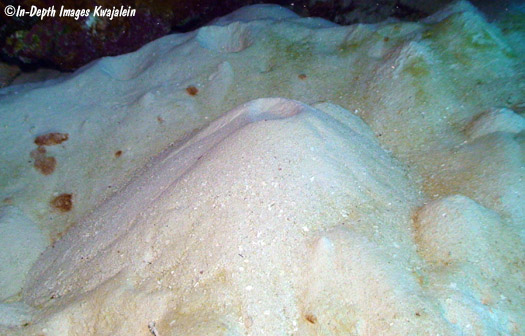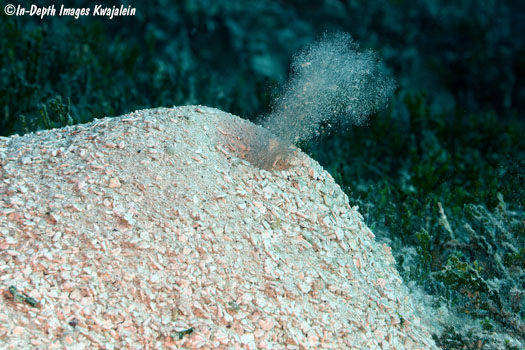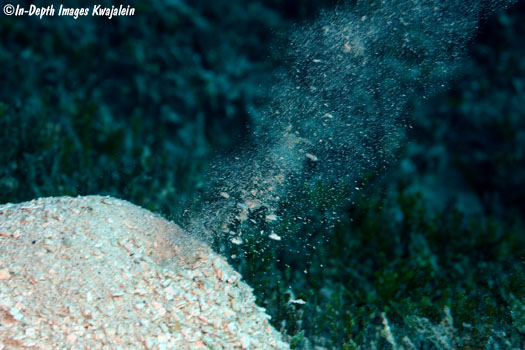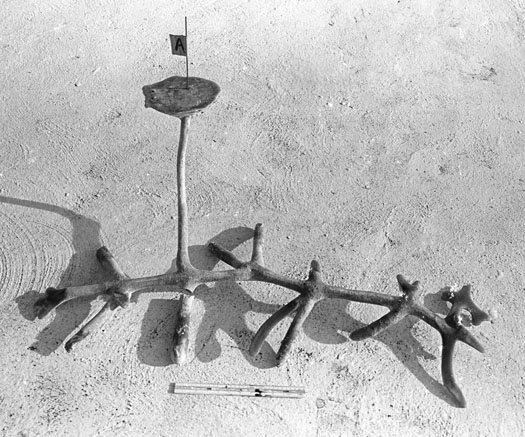
These shrimp spend their lives buried in sand, forming branching tunnels. They suck sand down from above to filter out anything edible, then pump the filtered back to the surface, forming these volcano-looking mounds. The mounds can be large and numerous in areas of fine lagoon-bottom sand. In the Kwajalein ski boat area, the volcanos may be one half to one meter in diameter and dense enough to overlap in most areas. We do not have a photo of the shrimp that creates the volcanos.

Occasionally, the volcanos "erupt," when the shrimp using its appendages forms a current to sweep the filtered sand out the top.


At the marine lab at Enewetak Atoll, scientists created these shrimp burrow casts by pouring freshly mixed fiberglass resin down a callianassid hole until it started to set and allow no more to go down. The next day, after the resin fully set, a small compressor powered dredge was used to dig out the cast. The stick at the bottom is a standard 12 inch/30cm ruler, showing the burrow tunnels are close to or sometimes exceeding 25mm in diameter. The vertical shaft drops down about 2/3rds of a meter to connect to a main tunnel, from which numerous branches extend. That shrimp has quite a mansion that probably extended much farther than the cast indicates.

Created 3 July 2018